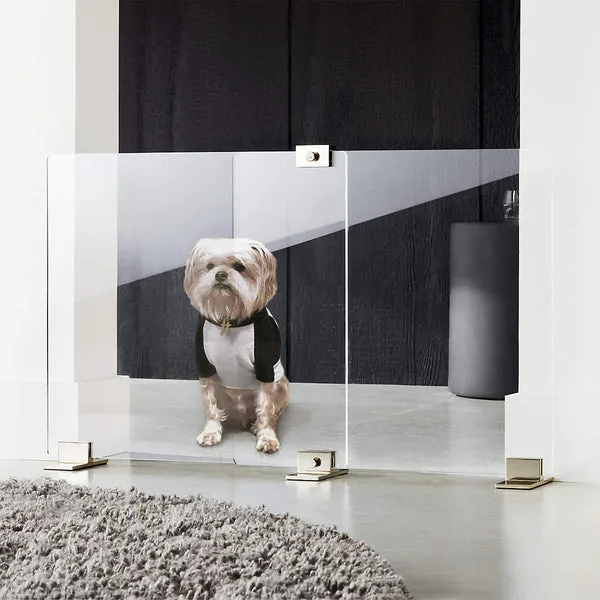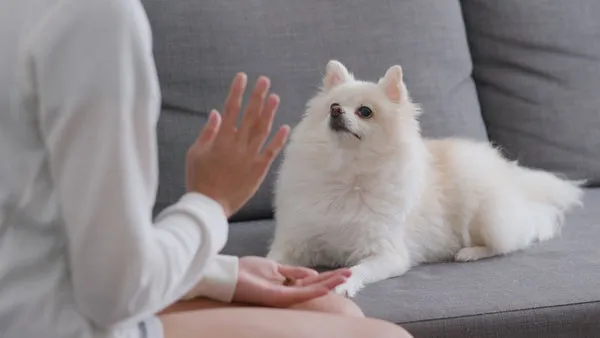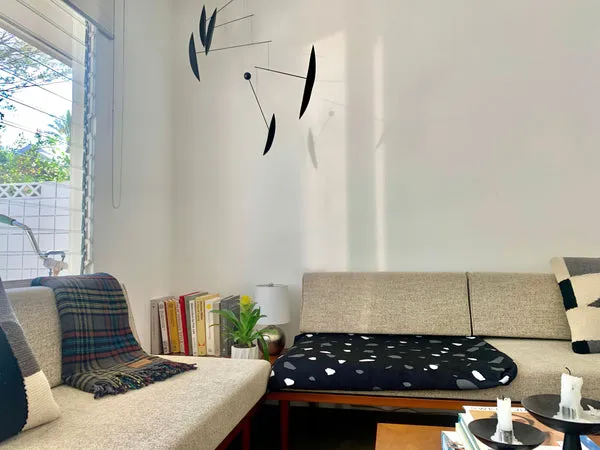Deciding on house rules for your canine companion is a crucial part of responsible dog ownership. For many, one of the most common training goals is teaching their dog to stay off the couch. Whether you have a boisterous puppy or a seasoned senior dog, establishing clear boundaries around furniture is essential for a harmonious household. The good news is that with consistent effort and the right techniques, this is a surprisingly manageable training process that can yield results in just a few days. This guide will provide you with effective strategies to train your dog to relinquish couch privileges, ensuring your furniture remains pristine and your training efforts stick.
To effectively train your dog to disembark from furniture on command, it’s vital to understand that consistency and positive reinforcement are your most powerful tools. Beyond simply saying “off,” incorporating other training methods can solidify your dog’s understanding and respect for boundaries. For instance, if your dog tends to wander off when called, learning how to train your puppy to come back to you can be a foundational skill that indirectly supports your furniture training by improving overall responsiveness.
 A dog looking at the couch with a determined owner nearby
A dog looking at the couch with a determined owner nearby
The Blockade Method: Physical Barriers for Immediate Results
One of the most straightforward approaches to deterring your dog from the couch is the blockade method. This strategy focuses on physically preventing your dog from even accessing the furniture. When you are home, you can achieve this by simply occupying the space on the couch. If there’s no room for your dog to comfortably jump up, they are less likely to try.
Beyond using your own body, consider employing household items or specialized equipment to create a barrier. Baby gates are excellent for this purpose, effectively blocking off access to the living room or the couch itself. If you prefer a less intrusive approach that still maintains your home’s aesthetic, you can strategically arrange decorative items, stacks of pillows, or even ottomans to make the couch inaccessible. This method is particularly useful for quickly establishing a physical deterrent, especially for dogs who have already developed a habit of lounging on the furniture.
 A dog sitting obediently on the floor next to a couch, with pillows stacked on it
A dog sitting obediently on the floor next to a couch, with pillows stacked on it
Mastering the “Off” and “Up” Commands: Verbal Cues for Control
While the blockade method is effective for immediate prevention, it doesn’t teach your dog the underlying commands. For comprehensive training, focus on teaching your dog specific verbal cues. The “off” command is paramount for instructing your dog to dismount furniture. Observe your dog’s behavior, and the moment they hop onto the couch, approach them calmly with a high-value treat or their favorite toy. Use the word “off” clearly and consistently as you lure them down to the floor. Repeat this process diligently, rewarding them with praise or the treat each time they successfully respond to the “off” command. This positive reinforcement helps your dog associate the word with the desired action.
Many owners also find it beneficial to teach the “up” command, especially if they occasionally want their dog to join them on the couch. This command is about permission and invitation. To teach “up,” you might find a leash helpful. With your dog on a leash, excitedly say “up!” and pat the area of the couch where you’d like them to jump. Wiggle a toy or treat to entice them. If they hesitate, a gentle upward tug on the leash can guide them. Once they make it to the desired spot, offer enthusiastic praise and a reward. This method teaches your dog that they are only allowed on the couch when explicitly invited, reinforcing the importance of your permission and further solidifying the “off” command. Improving your dog’s responsiveness to commands is key, and if your dog struggles with recall, learning teach dog to come with distractions can significantly boost their overall obedience, making furniture training smoother.
 A dog lying down comfortably on a dog bed placed in a living room
A dog lying down comfortably on a dog bed placed in a living room
The “Place” or “Bed” Command: Offering an Appealing Alternative
Another highly effective strategy for keeping your dog off the couch is to provide an attractive alternative. Designate a comfortable dog bed in the same room as the couch and teach your dog the “place” or “bed” command. This redirects their attention and desire for a comfy spot away from the forbidden furniture. When your dog shows interest in the couch, cue them with “place” and gently guide them towards their bed, using treats to create a positive association with this new spot.
As your dog becomes more accustomed to the “place” command, you can gradually phase out the treats for simply going to their bed. To reinforce the sofa as an off-limits area, focus on rewarding your dog specifically for choosing their bed over the couch when you are in the vicinity. This positive reinforcement strategy helps them understand that their bed is the preferred and permitted resting spot. For owners concerned about their dog’s chewing habits, learning a command for dog to stop biting can also contribute to a well-behaved dog that respects boundaries, including those around furniture.
 A dog looking up expectantly from its bed
A dog looking up expectantly from its bed
Addressing Couch Surfing When You’re Away
The challenge of keeping your dog off the couch often intensifies when you’re not home. Many dogs, seemingly obedient when supervised, seize the opportunity to hop onto furniture the moment they are alone. Security camera footage often reveals this common canine behavior.
The most effective way to prevent couch access when you’re absent is to reinstate physical barriers. This could mean using a baby gate to block the entrance to the room containing the couch or considering crate training. Crate training, while requiring patience and consistency, can be an invaluable tool for preventing destructive behaviors and keeping your dog safe and secure when you’re away. A well-introduced crate can become a den-like sanctuary for your dog. If crating isn’t feasible, you might explore the use of dog-appeasing pheromone diffusers or other subtle deterrents, observing your dog’s reaction to gauge their effectiveness.
Remember, consistency is the cornerstone of any successful dog training program. Ensure all members of your household are aligned on the training methods and rules regarding couch privileges. Mixed signals can confuse your dog and undermine your efforts. Reinforce the desired behaviors consistently, and celebrate their successes.
For personalized guidance and expert advice on home-based training, consider enrolling in professional online dog training programs. These resources can provide structured lessons and support to help you achieve your training goals and build a stronger bond with your canine companion. Moreover, if your dog struggles with the tendency to wander, mastering how to train a dog to walk off leash can enhance their overall obedience and responsiveness, which are beneficial in all training aspects.
References
- Wag Walking. (n.d.). How to Train Your Dog to Stay Off the Furniture.
- Laylo Pets. (n.d.). Dog Bed Collection.
- Laylo Pets. (n.d.). How to Crate Train Your Dog.
- Laylo Pets. (n.d.). Homeschool Online Dog Training.
